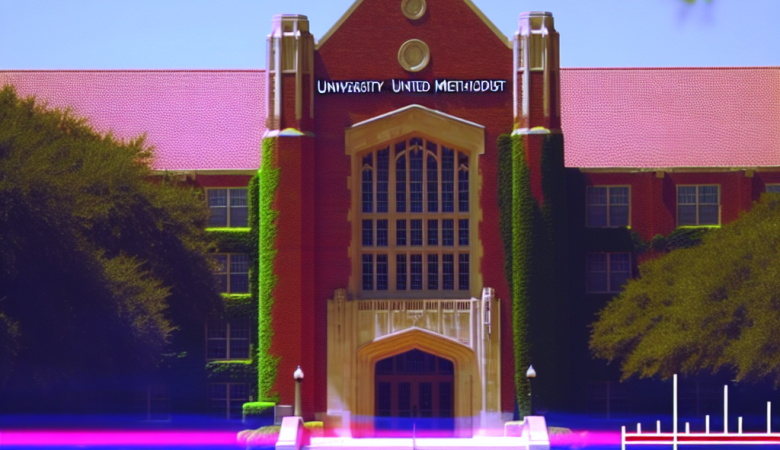Pros and Cons of Directly Paying Scholarships to Students
Can Scholarships be paid directly to the students
Scholarships are a valuable resource for students seeking financial assistance to pursue their education. Traditionally, scholarships have been awarded to students through educational institutions, with the funds being disbursed directly to the school. However, there is a growing debate about whether scholarships should be paid directly to the students themselves. In this article, we will explore the pros and cons of directly paying scholarships to students.
One of the main advantages of paying scholarships directly to students is the increased flexibility it provides. When scholarships are paid to the students, they have the freedom to use the funds as they see fit. This can be particularly beneficial for students who have additional expenses beyond tuition, such as housing, textbooks, or transportation. By giving students control over the scholarship funds, they can make decisions that best meet their individual needs.
Another advantage of directly paying scholarships to students is the potential for increased motivation and accountability. When students receive the funds directly, they may feel a greater sense of responsibility to use the money wisely and make the most of their educational opportunities. This can lead to increased motivation to succeed academically and make the most of their scholarship. Additionally, students who are directly responsible for managing their scholarship funds may develop valuable financial management skills that can benefit them in the long run.
On the other hand, there are also some potential drawbacks to directly paying scholarships to students. One concern is that students may misuse the funds or make poor financial decisions. Without the oversight of educational institutions, there is a risk that scholarship funds could be spent on non-educational expenses or wasted on frivolous purchases. This could undermine the purpose of the scholarship and hinder the student’s academic progress.
Another potential drawback is the administrative burden that comes with directly paying scholarships to students. Educational institutions have systems in place to manage scholarships and ensure that funds are allocated appropriately. If scholarships were paid directly to students, it would require additional administrative work to track and monitor the disbursement of funds. This could be a significant logistical challenge, particularly for larger scholarship programs.
In conclusion, the question of whether scholarships should be paid directly to students is a complex one with both pros and cons. Directly paying scholarships to students can provide increased flexibility and motivation, allowing students to make decisions that best meet their individual needs. However, there is also a risk of misuse of funds and increased administrative burden. Ultimately, the decision of how scholarships are disbursed should be based on careful consideration of the specific circumstances and goals of the scholarship program.
How Direct Scholarship Payments Impact Student Financial Responsibility
Can Scholarships be paid directly to the students
Scholarships are a valuable resource for students seeking financial assistance to pursue their education. These awards can help cover tuition fees, textbooks, and other educational expenses. Traditionally, scholarships have been paid directly to the educational institution, ensuring that the funds are used for their intended purpose. However, there is a growing trend towards paying scholarships directly to the students themselves. This shift in payment method has both advantages and disadvantages, and it is important to consider how it impacts student financial responsibility.
One of the main advantages of paying scholarships directly to students is the increased flexibility it provides. When scholarships are paid to the educational institution, students have limited control over how the funds are used. They may be restricted to covering tuition fees, leaving students responsible for other expenses such as textbooks, housing, and transportation. By paying scholarships directly to students, they have the freedom to allocate the funds where they are most needed. This can alleviate financial stress and allow students to focus more on their studies.
Another advantage of direct scholarship payments is the potential for students to build financial responsibility. When students receive scholarships directly, they are entrusted with managing the funds wisely. This can teach valuable lessons in budgeting, saving, and prioritizing expenses. By taking on this responsibility, students are better prepared for the financial challenges they may face after graduation. They learn to make informed decisions about their spending and develop important financial skills that will serve them well in the future.
However, there are also potential disadvantages to paying scholarships directly to students. One concern is that students may misuse the funds. Without the oversight of the educational institution, there is a risk that students may spend the money on non-educational expenses or make poor financial choices. This could result in wasted opportunities and hinder their academic progress. It is crucial for students to understand the importance of using scholarship funds responsibly and for institutions to provide guidance and support in managing these funds.
Another disadvantage is the potential impact on financial aid eligibility. When scholarships are paid directly to students, they are considered part of the student’s income. This can affect their eligibility for need-based financial aid, as it may increase their expected family contribution. Students who rely on financial aid to cover their educational expenses may find themselves in a difficult situation if their scholarships are paid directly to them. It is important for students to be aware of the potential consequences and to consult with financial aid advisors to understand how direct scholarship payments may affect their financial aid package.
In conclusion, the shift towards paying scholarships directly to students has both advantages and disadvantages. While it provides increased flexibility and the opportunity for students to develop financial responsibility, there are also concerns about misuse of funds and potential impact on financial aid eligibility. It is important for students, educational institutions, and scholarship providers to work together to ensure that direct scholarship payments are used responsibly and in a way that supports students’ educational goals. By doing so, scholarships can continue to be a valuable resource in helping students achieve their academic aspirations.
The Role of Universities in Directly Distributing Scholarships to Students
Can Scholarships be paid directly to the students
Scholarships are a valuable resource for students seeking financial assistance to pursue their education. These awards can make a significant difference in a student’s ability to afford tuition, books, and other expenses. Traditionally, scholarships have been distributed through universities, with the funds being applied directly to the student’s account. However, there is a growing debate about whether scholarships should be paid directly to the students themselves. This article will explore the role of universities in directly distributing scholarships to students and the potential benefits and drawbacks of this approach.
One argument in favor of universities distributing scholarships directly to students is that it empowers students to make their own financial decisions. By receiving the funds directly, students have the flexibility to allocate the money where it is most needed. This could include paying for textbooks, transportation, or even living expenses. By giving students this autonomy, universities are acknowledging their ability to manage their own finances and make responsible choices.
Another benefit of direct distribution is that it can help reduce administrative burdens on universities. Currently, universities are responsible for managing scholarship funds, ensuring they are applied correctly to student accounts, and tracking any remaining balances. By distributing scholarships directly to students, universities can streamline this process and focus their resources on other important tasks, such as academic support and student services.
However, there are also potential drawbacks to directly distributing scholarships to students. One concern is that students may misuse the funds or make poor financial decisions. Without the oversight of the university, there is a risk that scholarship money could be spent on non-educational expenses or wasted on unnecessary purchases. This could ultimately undermine the purpose of the scholarship and hinder a student’s academic progress.
Additionally, direct distribution could create inequality among students. Some students may receive larger scholarships than others, based on their financial need or academic achievements. If these funds are distributed directly to students, those who receive smaller scholarships may struggle to cover their expenses, while those with larger scholarships may have excess funds. This could create a disparity in the financial resources available to students and potentially impact their ability to succeed academically.
In conclusion, the role of universities in directly distributing scholarships to students is a topic of debate. While there are potential benefits, such as empowering students and reducing administrative burdens, there are also concerns about misuse of funds and inequality among students. Ultimately, the decision to distribute scholarships directly to students should be carefully considered, taking into account the specific needs and circumstances of the university and its students. By striking a balance between autonomy and oversight, universities can ensure that scholarships are used effectively to support students in their educational pursuits.
Exploring the Effectiveness of Direct Scholarship Payments in Supporting Student Success
Can Scholarships be paid directly to the students
Scholarships are a valuable resource for students seeking financial assistance to pursue their education. These awards can make a significant difference in a student’s ability to afford tuition, books, and other expenses associated with attending college or university. Traditionally, scholarships have been paid directly to the educational institution, with the funds being applied towards the student’s tuition fees. However, there is a growing debate about whether scholarships should be paid directly to the students themselves, allowing them more flexibility in how they use the funds. In this article, we will explore the effectiveness of direct scholarship payments in supporting student success.
One of the main arguments in favor of paying scholarships directly to students is that it empowers them to make decisions about their own education. By giving students control over the funds, they can choose how to allocate the money based on their individual needs. For example, a student may decide to use a portion of the scholarship to cover tuition fees, while using the remainder to purchase textbooks or pay for living expenses. This flexibility can be particularly beneficial for students who are juggling multiple responsibilities, such as working part-time or caring for family members. By allowing students to prioritize their own needs, direct scholarship payments can help reduce financial stress and improve overall well-being.
Another advantage of paying scholarships directly to students is that it encourages financial literacy and responsibility. When students receive funds directly, they are forced to make decisions about budgeting and managing their money. This hands-on experience can be invaluable in preparing students for the financial challenges they may face after graduation. By learning how to make informed choices about spending and saving, students are better equipped to handle their finances in the future. This can contribute to long-term financial stability and success.
However, there are also valid concerns about the effectiveness of direct scholarship payments. Critics argue that paying scholarships directly to students may lead to misuse of funds. Without the oversight of educational institutions, there is a risk that students may spend the money on non-educational expenses or make poor financial decisions. Additionally, some worry that direct payments could exacerbate existing inequalities, as students from disadvantaged backgrounds may be less equipped to manage large sums of money. These concerns highlight the need for proper guidance and support for students who receive direct scholarship payments.
To address these concerns, proponents of direct scholarship payments suggest implementing financial literacy programs and support services for students. By providing resources and education on budgeting, saving, and responsible financial management, students can be better equipped to make informed decisions about their scholarship funds. Additionally, ongoing support from academic advisors and financial aid offices can help students navigate the challenges of managing their finances. By combining direct scholarship payments with comprehensive support systems, the potential benefits of empowering students to make decisions about their own education can be maximized.
In conclusion, the question of whether scholarships should be paid directly to students is a complex one. While there are advantages to giving students control over their funds, there are also valid concerns about misuse and inequality. By implementing financial literacy programs and support services, the potential benefits of direct scholarship payments can be realized while mitigating the risks. Ultimately, the effectiveness of direct scholarship payments in supporting student success depends on a comprehensive approach that combines financial empowerment with ongoing guidance and support.




